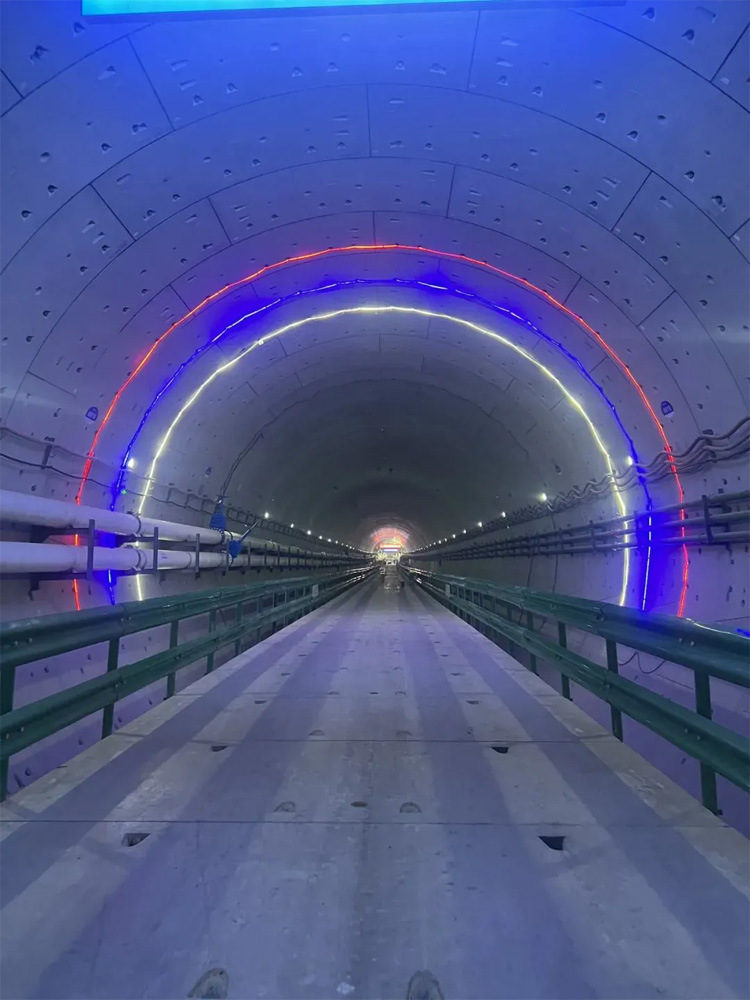Beneath the waters of Qingdao's Jiaozhou Bay, an ambitious engineering feat is taking shape as construction progresses on the world's longest undersea highway tunnel.
The second Jiaozhou Bay undersea tunnel, with a total length of 17.48 kilometers, includes a 9.95-kilometer segment beneath the sea. Once completed, the tunnel will significantly enhance transportation links between Qingdao and Huangdao, promoting integrated development across the east and west sides of Jiaozhou Bay.
The construction team faces numerous challenges, including navigating the complex marine environment, overcoming extreme water pressure, and tunneling through large-scale fault zones with an ultra-large diameter shield machine. To tackle these challenges, the project employs the custom-designed shield machine. This shield machine measures 165 meters in length, weighs 5,300 tons, and has a cutting diameter of 15.63 meters. Equipped with advanced intelligent systems, the shield machine began tunneling on January 26, 2024, and has already advanced over 500 meters.
The cutter head of the 600-ton shield machine
The tunnel finished
The project also features innovative technology to boost efficiency, such as an integrated slurry production, transport, and injection system. This approach has greatly enhanced construction speed and effectiveness.
Additionally, the project embraces digital and intelligent management through a digital twin of the physical project and the establishment of a digital management platform based on BIM technology. The use of these platforms has reduced the need for manual labor across various processes, and a shift to paperless operations has further minimized paper use.
Sustainability is at the heart of this project, with green and energy-saving practices embedded throughout the construction process. Reclaimed water is used to meet the shield machine's needs, potentially saving approximately 1 million cubic meters of fresh water. The project's wastewater treatment system recycles water for dust suppression and irrigation, effectively cutting costs. Waste soil and rock from the excavation are processed and repurposed for roadbed construction and backfilling in nearby areas, with crushed stone being reused as concrete aggregate, exemplifying a commitment to waste recycling and environmental stewardship.



